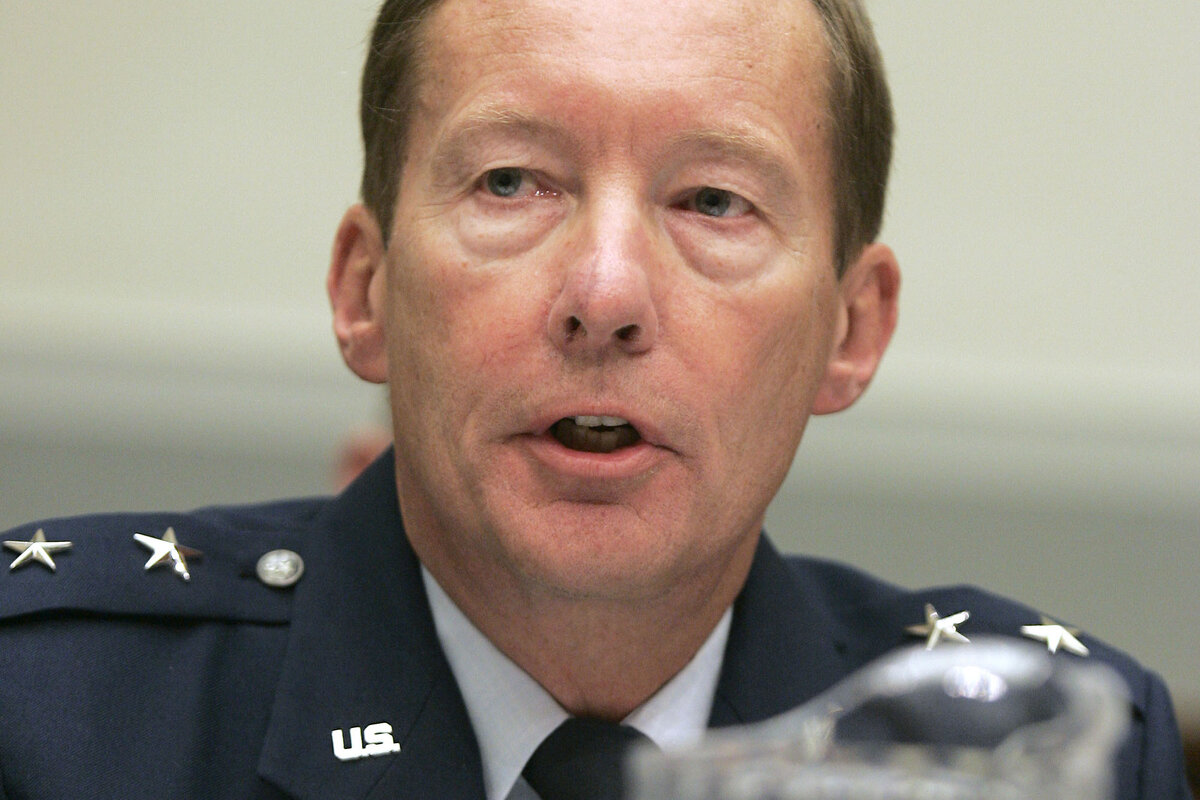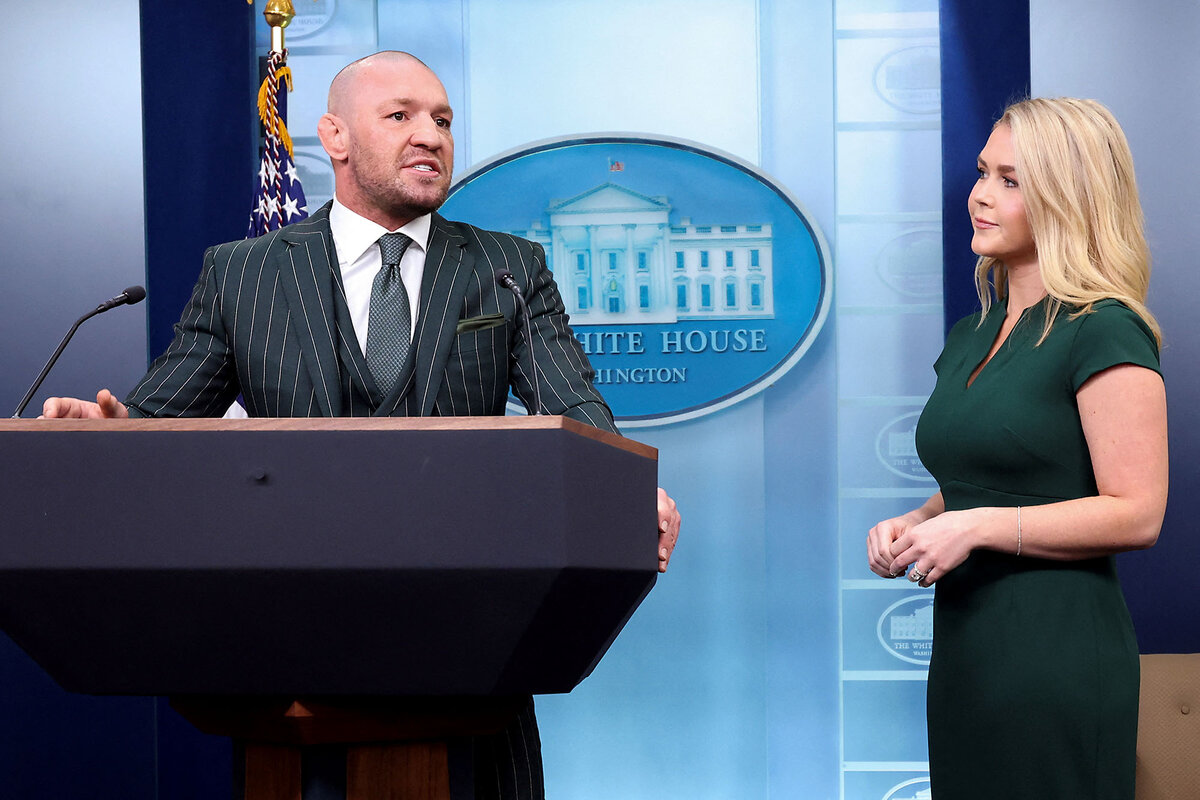As Hegseth touts ‘warriors’ and ‘lethality’ to flex power, some weigh risk to soldiers
Loading...
The Trump administration says it wants to bring back a “warrior ethos” to the Pentagon, and it is spelling out exactly what that means.
“It’s lethality, lethality, lethality,” Secretary of Defense Pete Hegseth has said. “Everything else is gone.”
That includes the top lawyers for the Army, Navy, and Air Force, who were fired a little less than a month after the new defense secretary was sworn in.
Why We Wrote This
Rules of engagement for armed conflict can fortify service members against “moral injury.” Some former military leaders say the current focus on “war fighting” could undermine effectiveness.
Though he gave scant reasons for the dismissals, Secretary Hegseth has derided the military’s judge advocate general (JAG) lawyers, who advise commanders in matters like rules of engagement and war crimes.
There is a course on civil-military relations that newly promoted one- and two-star officers are required to take, co-taught by Richard Kohn, former chief historian for the Air Force. In it, some generals serving during the first or second Trump administrations have expressed “worry” about the possibility of having to field “illegal orders, or orders that are not exactly illegal but improper – immoral or unethical,” says Professor Kohn, now professor emeritus at the University of North Carolina.
Secretary Hegseth, who as an infantry officer saw combat during his 2005-2006 deployment to Iraq and later served at a training center in Kabul, Afghanistan, has lobbied for pardoning war crimes committed by U.S. troops. He has also spoken about his decision to ignore an order not to fire on Iraqi fighters unless they raised their weapons first.
“I remember walking out of that briefing and pulling my platoon together and being like, ‘Guys, we’re not doing that,’” Mr. Hegseth said last November on a podcast.
Americans “should not fight by rules written by dignified men in mahogany rooms eighty years ago,” he argues in his book “The War on Warriors,” referring to the sorts of established treaties meant to prevent war crimes.
Yet U.S. commanders care about laws of warfare not because they’re nice, analysts say. It’s because, among other benefits, they see those guidelines as essential to protecting their own troops, to the extent they can, from having to make complicated ethical decisions in the midst of battles – choices that can set them up for struggles down the line.
Specialists in military psychology, like psychiatrist Jonathan Shay, have written about moral injury, for example – what he calls “indignant rage” from witnessing the “betrayal of ‘what’s right’ by a commander” or leader during a war.
For this reason and others, “An overemphasis on war fighting, lethality, and similar notions” has historically been regarded as ill-advised and even amateurish by top military strategists, says retired Maj. Gen. Charles Dunlap, former deputy JAG officer for the Air Force. He cites the axiom that “Amateurs talk tactics, professionals talk logistics.”
General Dunlap points to the Chinese military philosopher Sun Tzu’s observation that “To win one hundred victories in one hundred battles is not the acme of skill. To subdue the enemy without fighting is the acme of skill.”
As Mr. Hegseth endeavors to bring his own brand of warrior ethos to the Department of Defense, experts in law and armed forces history are considering ways commanders can prepare for the potential impact.
Differences between lethality and violence
Mr. Hegseth’s deployments were formative experiences “colored by contact with an enemy that’s trying to kill you,” says Brent Sadler, a senior fellow at the conservative Heritage Foundation think tank.
For this reason, he says, Mr. Hegseth tends to conflate lethality, or the ability to harm or damage, with actual violence, and his warrior ethos comes with particular regard for those who pull the trigger.
Mr. Hegseth put the safety of U.S. troops at risk, some argue, when he recently shared information about an imminent military attack on Houthi forces in Yemen in a Signal chat group to which a journalist, Jeffrey Goldberg, had been inadvertently added.
The information Secretary Hegseth added into the chat, including the time and delivery means in advance of the strike, would have been considered classified at the time he shared it, according to military experts. But Mr. Hegseth dismissed the severity of the leak, calling Mr. Goldberg, editor-in-chief of The Atlantic, one of America’s oldest and most serious-minded publications, “highly discredited” and arguing that the shared information didn’t constitute “war plans.”
Operations like this often depend on surprise. But military effectiveness always hinges on the threat of lethality, or “capacity to inflict extreme violence,” says Mr. Sadler, a retired U.S. Navy captain. “The more that we try to water that down, we get away from the real mission of the military.”
Ideally, political leaders should set the goals for military missions, while rules of engagement “really should be more for the uniformed officers, with the advice of JAGs, to determine so that they can meet the president’s objectives,” Mr. Sadler says. “Too often, though, there’s micromanagement” of these rules that can increase risk to U.S. forces.
As the dictum from Sun Tzu hints, the capacity to inflict violence might not lead to actual combat, but the U.S. military’s propensity for it gives adversaries pause, he adds.
In his first appearance before the Pentagon press corps last week, the Defense Department’s chief spokesperson, Sean Parnell, spoke frequently of his own combat experience in Afghanistan during a 30-minute briefing on Yemen – seeming to suggest, some analysts said, that under Mr. Hegseth’s leadership, the bona fides of battle are key to credibility.
“I know what it’s like to be in a situation when you’re under fire by the enemy,” Mr. Parnell noted in discussing Houthi rebels targeting U.S. sailors in the Middle East. “Having been in enemy combat before, the fog of war is a real thing,” he explained after a question about civilian casualties in the strikes.
And, after a reporter from a conservative news outlet asked whether the Pentagon would “commit to firing or otherwise disciplining” leaders involved in America’s chaotic 2021 withdrawal from Afghanistan, during which 13 U.S. service members were killed, Mr. Parnell said they should be held accountable.
“The men in my platoon ... we bled the ground red in Afghanistan,” he said.
The administration’s newly adopted warrior ethos does not shy away from the violence of war. It also appears to include admiration for those who impart it in other arenas.
Last month, a Pentagon press release celebrated the visit of Conor McGregor, an Irish mixed martial artist who was found liable for rape by an Irish high court in a civil case last fall. During their convivial Pentagon meeting, Mr. McGregor and Mr. Hegseth posed for pictures and lamented how immigration is destroying the culture of their countries “from within,” as Mr. McGregor put it.
The Defense Department’s press release about Mr. McGregor’s visit also said that “increasing lethality” will make troops “more suited for defending the nation.” Those defense efforts, it noted, currently include posting troops at the border to help stop illegal immigration.
Giving and getting when it comes to violence
As much talk as there is about imparting lethality, the Trump administration’s Pentagon leaders are clear, too, on their frustrations with being on the receiving end of it.
At the Pentagon press briefing, Mr. Parnell pointed out that his unit had an 85% casualty rate. “Your life is at risk. The life of your friends and your battle buddies is at risk.” In the midst of combat, restrictions on returning fire, he said, created for him “a hellish situation that I wouldn’t wish on my worst adversary.”
This point is a pivotal one for Mr. Hegseth, who decries “academic rules of engagement which have been tying the hands of our war fighters for too long” and the military lawyers he holds responsible for enforcing them.
But these lawyers do not make the rules of engagement. That’s the job of civilians and high command. Instead, their job is to help leaders interpret and adhere to them, says General Dunlap, now executive director of the Center on Law, Ethics, and National Security at Duke University’s Law School.
For this reason, “JAG lawyers, like all good lawyers, try to find lawful ways for their ‘client’ to do what the client wants to do,” he adds, “even if the JAG personally disagrees.”
If the goal behind firing the military’s top lawyers is to turn the “JAG corps into partisan rubber stamps by removing their most senior leaders, I predict that issue will surely fail,” General Dunlap says. “Sometimes the only right legal answer is no.”
For now, the Trump administration is loosening rules on commanders conducting military raids and airstrikes, expanding the range of people and places that can be targeted.
“It’s a much broader set of targets,” said Lt. Gen. Alexus Grynkewich, director of operations for the joint staff, in the press briefing last week. “So that allows us to achieve a tempo of operations where we can react to opportunities that we see on the battlefield.”
“Awful but lawful” orders
Professor Kohn says that as the generals in his class survey the current military landscape, they often have the impression that they can choose not to follow orders they consider immoral or unethical.
This is not the case. Mr. Kohn’s co-teacher, Peter Feaver, director of the Duke Program in American Grand Strategy, calls them “awful but lawful” orders.
As the U.S. Military’s Manual for Courts-Martial explains, “The dictates of a person’s conscience, religion, or personal philosophy cannot justify or excuse disobedience of an otherwise lawful order.”
But, Professor Kohn says, “What you can do is you can say, ‘You know, sir, this forces us to do unethical or immoral things that are not going to produce the outcome you want.’”
To help students develop these skills, the professors guide them in the art of “leading from the middle.”
This involves not only relaying orders to subordinates, but also reacting to orders from above “that you think are not in the best interest of the command or the country,” Professor Kohn says.
“You try to persuade them out of that. You speak up. You speak up quietly.”
And if orders are illegal, or if, for example, the risk to troops posed by newly prescribed rules of engagement is too great – “if [the commanders] have a moral problem with it, because, again, it’s not a question of legality,” Mr. Sadler of The Heritage Foundation says – then those commanders have another option.
“They need to resign and then make a very public statement,” he adds. “That’s how that’s supposed to play out.”
Editor’s note: This story was updated soon after publication with an additional quotation about rules of engagement.









